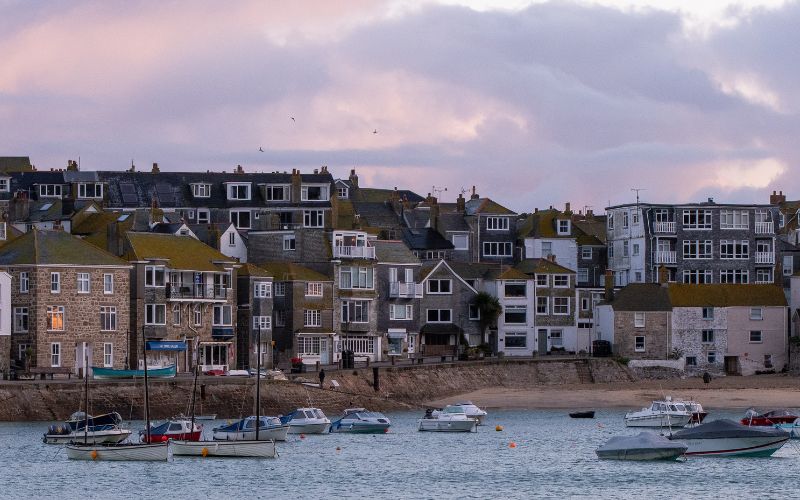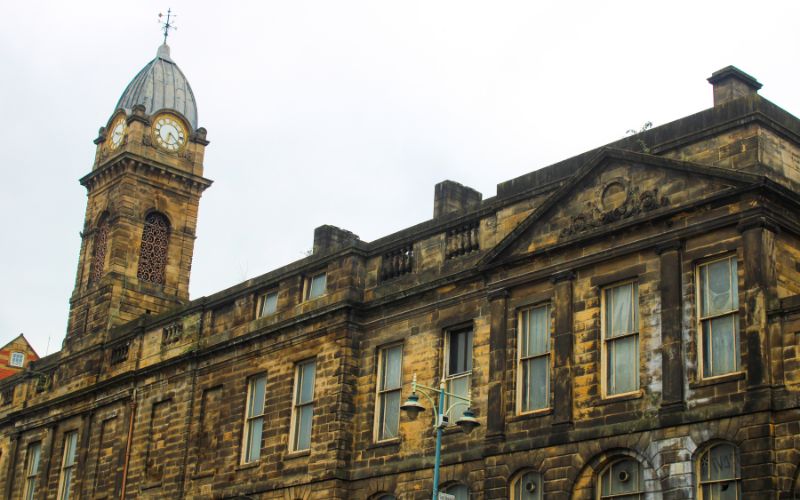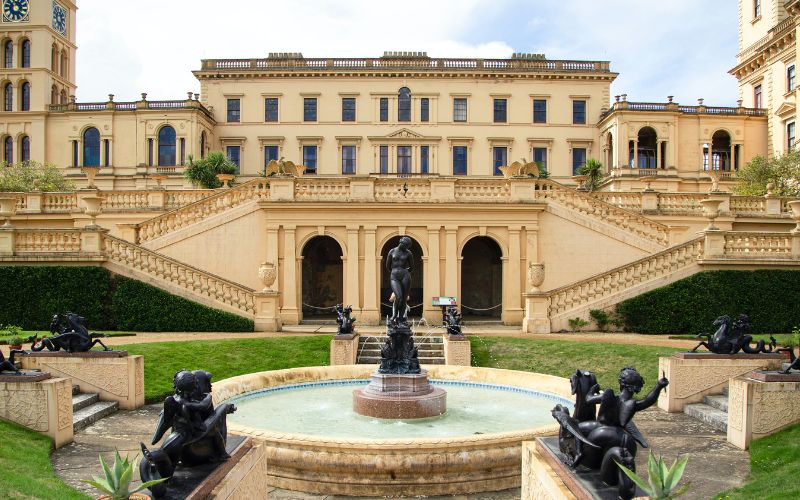As Building Surveyors, our team are lucky enough to work on some of the most beautiful buildings across the Southeast. Here are our top 5 places to visit for those with an eye for detail…
Luttrell's Tower, Eaglehurst
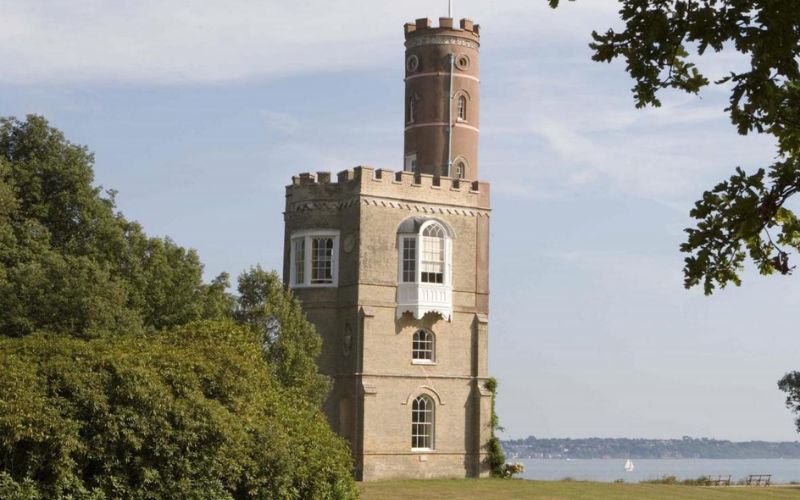
Luttrell’s Tower was constructed in 1780 for the First Earl of Carhampton and Member of Parliament, Temple Simon Luttrell, owner of the Eaglehurst estate on which it is built.
With it’s gothic-era style, the architect behind this distinctive tower was mistaken for centuries with many believing it to be the work of architect James Wyatt.
It wasn’t until 1990 that Roger White of the Georgian Group discovered that the tower was actually the design of Royal Academy founder, Thomas Sandby - also his last surviving structure.
The property is comprised of a commanding tower, with 360-degree views of the area and the coastline, and secret tunnels leading out to the shore.
Architect identity aside, Temple Simon Luttrell may have had a bigger role in the design of the building.
Whilst in Government it was rumoured that Luttrell was a smuggler and whilst there is no evidence to support this theory, the structure of the tower and the connecting tunnels for what was a domestic dwelling has certainly led many to speculate over the years.
Fast forward to the 20th century, the tower became host to a radio transmitter for a brief period and is today a holiday home for the curious.
Farnborough Hill, Farnborough
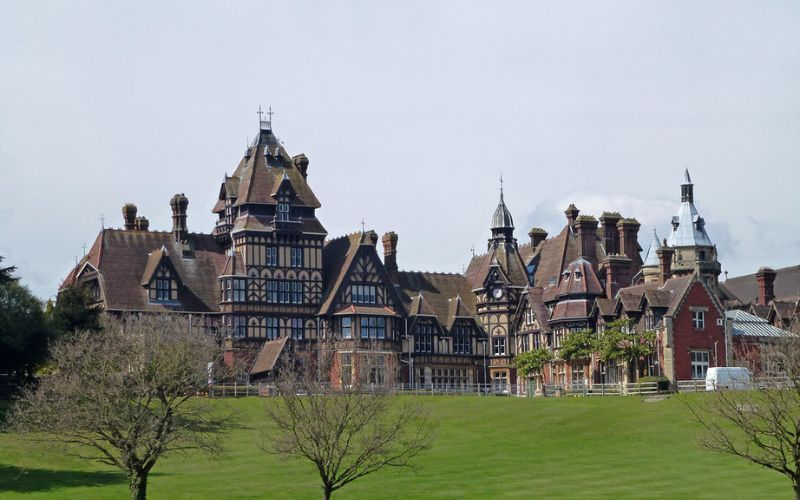
Surrounded by 60 acres of land, this unique-looking property is home to an all-girls school, but it hasn’t always been a place of education.
Farnborough Hill was designed in 1860 by Publisher Thomas Longman and constructed by architect Henry Edward Kendall Jr, known for his project management skills and developing grand country homes.
The property became the main residence of Emperor Napoleon III’s widow, Empress Eugénie, in 1880 following her exile.
Empress Eugénie lived there until her death in 1920 and several years later, the property was purchased by The Religious of Christian Education and transformed into a covenant school.
Architect Adrian Gilbert Scott was commissioned in 1927 to design and develop additional school buildings, along with other alterations to the property including the construction of the beautiful school chapel.
Farnborough Hill is now a Grade I listed building, with few expansion works permitted over the years, all of which have kept in line with the building’s original structure and appearance.
The building’s appearance elegantly mirrors that of 16th century Elizabethan architecture, combined with Neo-gothic design styles, making this one of the more intriguing properties on our list.
Titchfield Abbey, Fareham
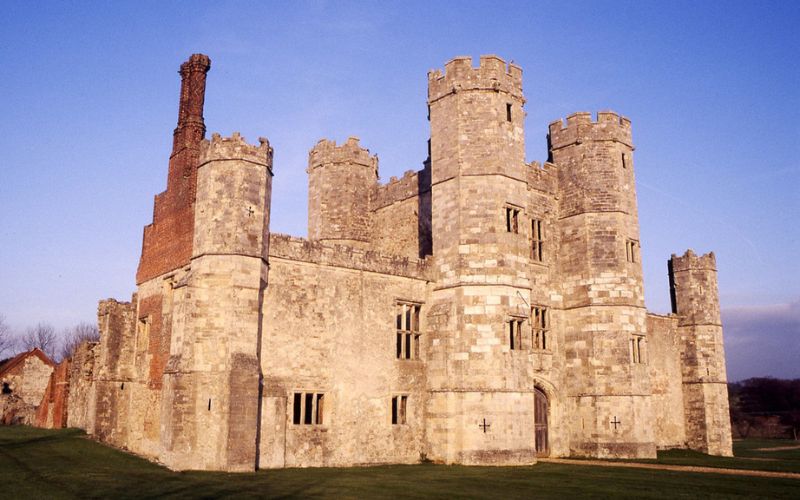
Once a glorious medieval Christian hub, the ruins of Titchfield Abbey can be found along the south coast of Hampshire.
Located in Fareham, the medieval era structure is believed to have been built in the 13th century as a dwelling for an order of frugal priests known as the Premonstratensian Canons.
However, it was during the dissolution of the monasteries under Henry VIII’s rule, following his break away from the Church, that Titchfield Abbey was closed – forcing the Canons to flee.
The King gifted the Abbey to Thomas Wriothesley as a thank you for aiding the suppression of Catholicism. Wriothesley then appointed Thomas Bartewe, Henry VIII’s Master Mason, to help convert the Abbey into a mansion.
Constructed across the Nave, the Gatehouse is reputed to be one the building’s best surviving features. It was kept and refurbished during Wriothesley’s ownership, playing a key part in the conversion of the Abbey.
Passing down through the centuries, the property eventually fell into disrepair and was abandoned in 1781. The dwelling remained dormant until the Government bought the estate in the 20th century.
The ruins of Titchfield Abbey were turned into a ‘Scheduled Ancient Monument’ and is now protected by English Heritage. Visitors can see the remains of the medieval structure and admire it’s residual Tudor alterations.
Spinnaker Tower, Portsmouth
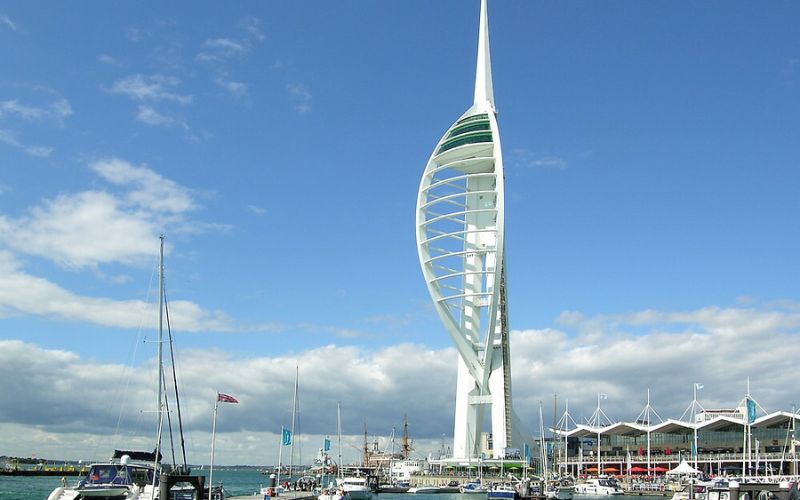
Those in search for a more modern example of fine Hampshire architecture can look to the Spinnaker tower in the historic port city of Portsmouth.
Named after a type of sail, the Spinnaker was designed to look like its namesake (a Spinnaker Sail), a nod to the city’s infamous maritime history.
Commissioned in the 90s, the tower was designed by local firm HGP Architects and constructed by engineering consultants, Scott Wilson, as part of the council’s redevelopment plans.
Meant to commemorate the new millennium, construction didn’t actually start until 2001. The project was completed in 2005 and cost £36.5m.
The tower is now one of Portsmouth’s biggest tourist attractions and for a brief time, it was even sponsored by Emirates (the Dubai-based airline).
Houghton Lodge and Gardens, Stockbridge
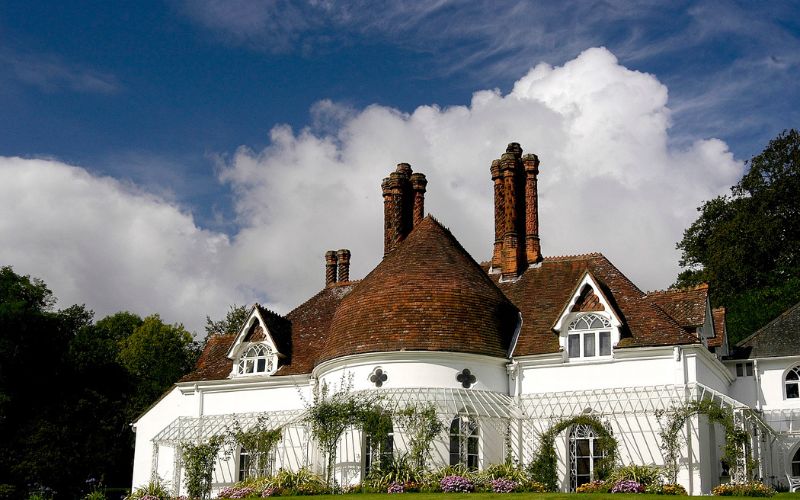
Described as the “jewel of Test Valley”, Houghton Lodge and Gardens is a Grade II* listed building and one of England’s finest examples of cottage orné.
Said to be the work of architect John Plaw, a pioneer of this type of building design, Houghton Lodge was constructed in 1793 and intended as a fishing lodge.
Surrounded by a traditional chalk cobb wall, the garden is filled with wildflowers and fruit trees – which has remained as part of the original design.
The garden is also known for being home to a heritage orchard, with a new oriental garden expected to open this year for the estate’s 230th anniversary.
Visitors can’t deny that the intricate design of the eighteenth-century dwelling, combined with the many different types of plants found within the property’s traditional English gardens, makes Houghton Lodge one of the best examples of architecture in Hampshire.
Who are we?
Our team of Chartered Building Surveyors work closely with property owners, local authorities, landlords, and social housing providers across London and the South Coast to proactively navigate a changing horizon. From ensuring new projects are delivered on time and in budget, to delivering EPC and MEES upgrades on behalf of landlords.
Read more about our solutions here:
Reinstatement Cost Assessments
Planned Preventative Maintenance
Alternatively, email us at enquiries@sillencehurn.co.uk or call our Southampton team on 02380 014786 or London at 020 3143 2128


